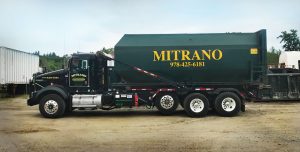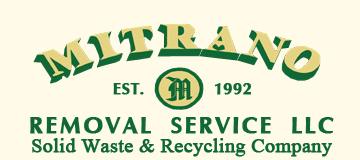 Compactors come in all types and sizes. If you’re trying to select the right compactor and size for your operation and application, it’s important to choose the right one to fit the volume and type of waste material your organization generates.
Compactors come in all types and sizes. If you’re trying to select the right compactor and size for your operation and application, it’s important to choose the right one to fit the volume and type of waste material your organization generates.
Some companies use a compactor to reduce waste volume resulting in fewer trips to dispose of waste. Most professional waste haulers charge per pull (the industry term for a dumpster pick-up), so fewer pulls means lower cost.
There are four basic compactor types that accommodate virtually any kind of business operation and industry:
- Indoor compactors are small but powerful and can compact up to 15 standard bags of trash into one. The trash is compacted into a cube that is wheeled out to the dumpster on a device called a lift cart and cranked up to be dumped.
- Vertical compactors, also known as front-loaded vehicle service compactors, are compactors that can be easily emptied using a front load vehicle. They’re typically small but are installed outside, occupying less space than other compactors, making them ideal for confined spaces.
- Stationary compactors are designed for businesses that produce predominantly dry waste, such as various kinds of paper and cardboard, wood, and plastic. They’re called “stationary” because the compactor itself is a fixed installation and a removable container is used for the compacted trash.
- Self-contained compactors are built to handle more organic-type trash, such as the type produced by restaurants, grocery stores, and even some healthcare facilities. The entire unit, including the compactor section and waste container, is hauled to a disposal facility to minimize risk of leakage.
Large 15-40 yard self-contained compactors are generally used by restaurants, supermarkets, department stores, and malls that share a dumpster. These compactors are ideal for businesses that produce large volumes of waste and have plenty of space outside for equipment. Businesses with limited space such as fast food restaurants often prefer to use indoor trash compactors or outdoor vertical compactors. Indoor compactors are typically about the size of a refrigerator, and outdoor vertical compactors can fit in most standard dumpster corrals.
If you’re a larger operation that produces between 30 and 40 cubic yards of trash per week, you should consider a vertical system. If your waste generation is more like 60-150 cubic yards per week, then you’re definitely a candidate for a stationary or self-contained compactor.
When utilized properly, trash compactors can be a big time and money saver for businesses, especially when they generate substantial amounts of trash. If you’d like to know more about selecting an appropriate compactor for your organization, give us a call. We’d be happy to review all of the options and help you choose the right one for your operation.
